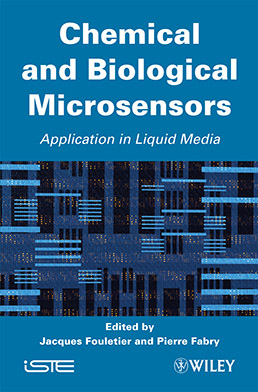
This book reviews the state of art in the field of chemical sensors for analyses of ionic or molecular species dissolved in liquid media, mainly in aqueous solutions.
The transduction of such devices is based on chemical, biological and physical phenomena. The fundamental phenomena involved in these sensors are described in the different chapters by specialists having a good expertise in the field. Numerous recent bibliographic references are given. Most of the devices could be miniaturised using modern technologies allowing a fabrication on a large scale, for a mass production at low cost. Moreover, such devices could open the field of applications in a near future (environmental, biomedical, food industries, domotic and automotive applications etc.).
1. General Features, B. Michaux.
2. Chemical Sensors: Development and Industrial Requirements, J.J. Fombon.
3. Sensibility and Selectivity of Electrochemical Sensors, P. Fabry, J.C. Moutet.
4. Potentiometric Sensors (Ions and Dissolved Gas), A. Pradel, E. Saint Aman.
5. Amperometric Sensors, A. Walcarius, C. Gondran, S. Cosnier.
6. ISFET, BIOFET Sensors, N. Jaffrezic, C. Martelet.
7. Biosensors and Chemical Sensors Based Upon Guided Optics, J.P. Goure, L. Blum.
8. Sensors and Voltammetric Probes for in situ Monitoring of Traces Elements in Aquatic Media, M.L. Tercier-Waeber, J. Buffle.
9. Chemometries, P. Breuil.
10. Impedancemetric Sensors, J. Fouletier, P. Fabry.
Pierre Fabry was Professor of University (Grenoble). He was specialised in solid electrochemistry, more specially in sensors devices (ionic and gas species) using ceramics materials.
Jacques Fouletier is Professor in Grenoble University. His main topics of interest concern oxygen activity control in gases and molten metals, solid electrochemistry, solid oxide fuel cells and electrochemistry of molten salts for nuclear applications.